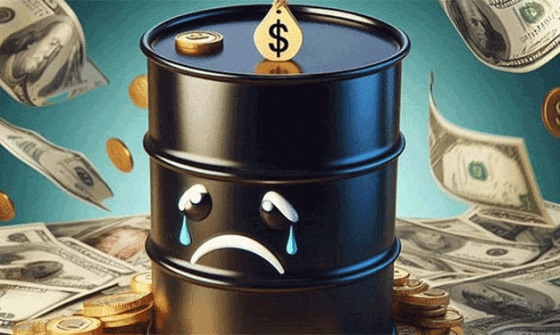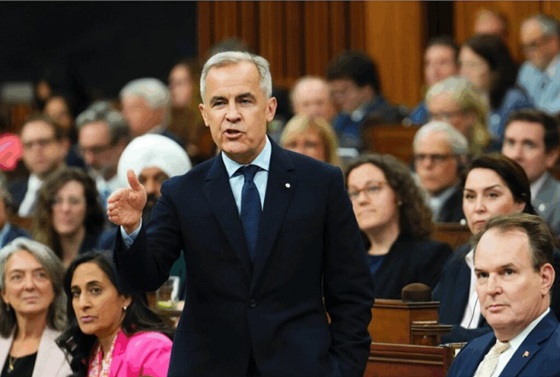Uncategorized
Powerful quake hits Philippines, day after deadly temblor

PORAC, Philippines — A new powerful earthquake hit the central Philippines on Tuesday, a day after a magnitude 6.1 quake rattled the country’s north and left at least 16 people dead, including in a collapsed supermarket, where rescuers scrambled to find survivors.
The U.S. Geological Survey put the magnitude of Tuesday’s quake at 6.4, while the local seismology agency said it was 6.5. The quake was
There were no immediate reports of casualties or major damage from the new quake.
Classes and office work were suspended in San Julian, where cracks on roads and small buildings and a church were reported. Power was deliberately cut as a precaution in the quake’s aftermath, officials said.
Meanwhile, rescuers worked overnight to recover bodies in the rubble of a supermarket that crashed down in Monday’s quake, which damaged other buildings and an airport in the northern Philippines.
The bodies of five victims were pulled from Chuzon Supermarket and seven other villagers died due to collapsed house walls in hard-hit Porac town in Pampanga province, north of Manila, said Ricardo Jalad, who heads the government’s disaster-response agency.
An Associated Press photographer saw seven people, including at least one dead, being pulled out by rescuers from the pile of concrete, twisted metal and wood overnight. Red Cross volunteers, army troops, police and villagers used four cranes, crow bars and sniffer dogs to look for the missing, some of whom were still yelling for help Monday night.
Authorities inserted a large orange tube into the rubble to blow in oxygen in the hope of helping people still pinned there to breathe. On Tuesday morning, rescuers pulled out a man alive, sparking cheers and applause.
“We’re all very happy, many clapped their hands in relief because we’re still finding survivors after several hours,” Porac Councilor Maynard Lapid said by phone from the scene, adding that another victim was expected to be pulled out alive soon.
Jalad said at least 15 people died in Pampanga province, including those who perished in Porac town. The quake damaged houses, roads, bridges, Roman Catholic churches and an international airport terminal at Clark Freeport, a former American air base, in Pampanga. A state of calamity was declared in Porac to allow contingency funds to be released faster.
A child died in a landslide in nearby Zambales province, officials said.
At least 14 people remained missing in the rice-growing agricultural region, most of them in the rubble of the collapsed supermarket in Porac, while 81 others were injured, according to the government’s disaster-response agency.
The four-story building housing the supermarket crashed down when the quake shook Pampanga as well as several other provinces and Manila, the Philippines’ capital, on the main northern island of Luzon.
More than 400 aftershocks have been recorded, mostly unfelt.
The U.S. Geological Survey’s preliminary estimate is that more than 49 million people were exposed to some shaking from the earthquake, with more than 14 million people likely to feel moderate shaking or more.
Clark airport was closed temporarily because of damaged check-in counters, ceilings and parts of the departure area, airport official Jaime Melo said, adding that seven people were slightly injured and more than 100 flights were
In Manila, thousands of office workers dashed out of buildings in panic, some wearing hard hats, and residents ran out of houses as the ground shook. Many described the ground movement like sea waves.
A traffic-prone Manila street was partially closed after a college building was damaged by the quake and appeared to tilt slightly sideways toward an adjacent building, officials said. Many schools and government offices, including courts, in the densely packed Manila metropolis were closed Tuesday to allow inspections of their buildings.
Philippine seismologists said the back-to-back quakes in the last two days were unrelated and caused by different local faults.
One of the world’s most disaster-prone countries, the Philippines has frequent earthquakes and volcanic eruptions because it lies on the so-called Pacific “Ring of Fire,” a seismically active arc of volcanos and fault lines in the Pacific Basin. A magnitude 7.7 quake killed nearly 2,000 people in the northern Philippines in 1990.
___
Associated Press writer Jim Gomez in Manila contributed to this report.
Bullit Marquez, The Associated Press
Uncategorized
Cost of bureaucracy balloons 80 per cent in 10 years: Public Accounts

The cost of the bureaucracy increased by $6 billion last year, according to newly released numbers in Public Accounts disclosures. The Canadian Taxpayers Federation is calling on Prime Minister Mark Carney to immediately shrink the bureaucracy.
“The Public Accounts show the cost of the federal bureaucracy is out of control,” said Franco Terrazzano, CTF Federal Director. “Tinkering around the edges won’t cut it, Carney needs to take urgent action to shrink the bloated federal bureaucracy.”
The federal bureaucracy cost taxpayers $71.4 billion in 2024-25, according to the Public Accounts. The cost of the federal bureaucracy increased by $6 billion, or more than nine per cent, over the last year.
The federal bureaucracy cost taxpayers $39.6 billion in 2015-16, according to the Public Accounts. That means the cost of the federal bureaucracy increased 80 per cent over the last 10 years. The government added 99,000 extra bureaucrats between 2015-16 and 2024-25.
Half of Canadians say federal services have gotten worse since 2016, despite the massive increase in the federal bureaucracy, according to a Leger poll.
Not only has the size of the bureaucracy increased, the cost of consultants, contractors and outsourcing has increased as well. The government spent $23.1 billion on “professional and special services” last year, according to the Public Accounts. That’s an 11 per cent increase over the previous year. The government’s spending on professional and special services more than doubled since 2015-16.
“Taxpayers should not be paying way more for in-house government bureaucrats and way more for outside help,” Terrazzano said. “Mere promises to find minor savings in the federal bureaucracy won’t fix Canada’s finances.
“Taxpayers need Carney to take urgent action and significantly cut the number of bureaucrats now.”
Table: Cost of bureaucracy and professional and special services, Public Accounts
| Year | Bureaucracy | Professional and special services |
|
$71,369,677,000 |
$23,145,218,000 |
|
|
$65,326,643,000 |
$20,771,477,000 |
|
|
$56,467,851,000 |
$18,591,373,000 |
|
|
$60,676,243,000 |
$17,511,078,000 |
|
|
$52,984,272,000 |
$14,720,455,000 |
|
|
$46,349,166,000 |
$13,334,341,000 |
|
|
$46,131,628,000 |
$12,940,395,000 |
|
|
$45,262,821,000 |
$12,950,619,000 |
|
|
$38,909,594,000 |
$11,910,257,000 |
|
|
$39,616,656,000 |
$11,082,974,000 |
Uncategorized
Trump Admin Establishing Council To Make Buildings Beautiful Again


From the Daily Caller News Foundation
By Jason Hopkins
The Trump administration is creating a first-of-its-kind task force aimed at ushering in a new “Golden Age” of beautiful infrastructure across the U.S.
The Department of Transportation (DOT) will announce the establishment of the Beautifying Transportation Infrastructure Council (BTIC) on Thursday, the Daily Caller News Foundation exclusively learned. The BTIC seeks to advise Transportation Secretary Sean Duffy on design and policy ideas for key infrastructure projects, including highways, bridges and transit hubs.
“What happened to our country’s proud tradition of building great, big, beautiful things?” Duffy said in a statement shared with the DCNF. “It’s time the design for America’s latest infrastructure projects reflects our nation’s strength, pride, and promise.”
“We’re engaging the best and brightest minds in architectural design and engineering to make beautiful structures that move you and bring about a new Golden Age of Transportation,” Duffy continued.
Mini scoop – here is the DOT’s rollout of its Beautifying Transportation Infrastructure Council, which will be tasked with making our buildings beautiful again. pic.twitter.com/
9iV2xSxdJM — Jason Hopkins (@jasonhopkinsdc) October 23, 2025
The DOT is encouraging nominations of the country’s best architects, urban planners, artists and others to serve on the council, according to the department. While ensuring that efficiency and safety remain a top priority, the BTIC will provide guidance on projects that “enhance” public areas and develop aesthetic performance metrics.
The new council aligns with an executive order signed by President Donald Trump in August 2025 regarding infrastructure. The “Making Federal Architecture Beautiful Again” order calls for federal public buildings in the country to “respect regional architectural heritage” and aims to prevent federal construction projects from using modernist and brutalist architecture styles, instead returning to a classical style.
“The Founders, in line with great societies before them, attached great importance to Federal civic architecture,” Trump’s order stated. “They wanted America’s public buildings to inspire the American people and encourage civic virtue.”
“President George Washington and Secretary of State Thomas Jefferson consciously modeled the most important buildings in Washington, D.C., on the classical architecture of ancient Athens and Rome,” the order continued. “Because of their proven ability to meet these requirements, classical and traditional architecture are preferred modes of architectural design.”
The DOT invested millions in major infrastructure projects since Trump’s return to the White House. Duffy announced in August a $43 million transformation initiative of the New York Penn Station in New York City and in September unveiledmajor progress in the rehabilitation and modernization of Washington Union Station in Washington, D.C.
The BTIC will comprise up to 11 members who will serve two-year terms, with the chance to be reappointed, according to the DOT. The task force will meet biannually. The deadline for nominations will end Nov. 21.
-

 Crime2 days ago
Crime2 days agoBrown University shooter dead of apparent self-inflicted gunshot wound
-

 Business22 hours ago
Business22 hours agoGeopolitics no longer drives oil prices the way it used to
-

 Business22 hours ago
Business22 hours agoArgentina’s Milei delivers results free-market critics said wouldn’t work
-

 Alberta2 days ago
Alberta2 days agoAlberta’s new diagnostic policy appears to meet standard for Canada Health Act compliance
-

 Health1 day ago
Health1 day agoRFK Jr reversing Biden-era policies on gender transition care for minors
-

 Business21 hours ago
Business21 hours agoDeadlocked Jury Zeroes In on Alleged US$40 Million PPE Fraud in Linda Sun PRC Influence Case
-

 Business2 days ago
Business2 days agoTrump signs order reclassifying marijuana as Schedule III drug
-

 Censorship Industrial Complex1 day ago
Censorship Industrial Complex1 day agoCanadian university censors free speech advocate who spoke out against Indigenous ‘mass grave’ hoax










